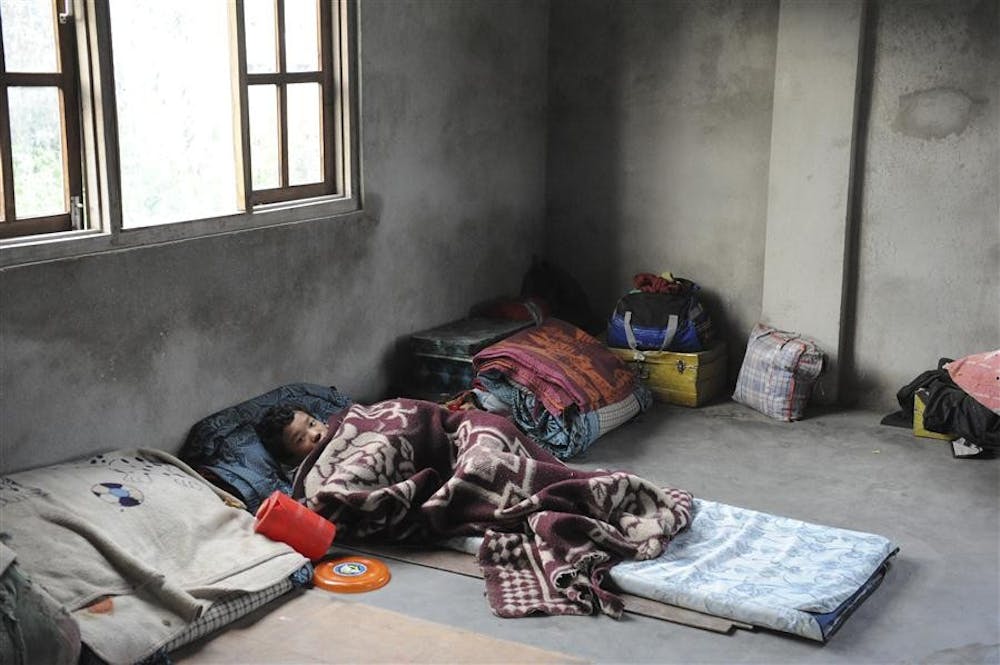The time had come for me to depart for Jorpati. We drove along a dusty road, leaving the noise of the city behind.
For miles we saw nothing but the peculiar pastel-colored homes we’d grown so accustomed to until we arrived at what looked to be a construction site.
We exited the car and were instantly met with curious glances coming from within the unfinished structure. Children poked their heads through the windows, and as we approached them they shouted, “Hello brother, hello sister!”
This unfinished building, consisting of nothing but cement walls and dusty unfinished floors, was the orphanage.
My fellow volunteers and I took a tour of the place, only to find small children sitting on the filthy floor eating from dirty metal plates.
The children slept on cardboard and makeshift mattresses laid out on the concrete floors. The blankets the children slept under smelled of mold.
The staircase leading to the upper floors was covered in cracks. Rust covered the few metal railings, and the rest of the place was nothing but a disaster waiting to happen.
However, the children were sweet and all too unaware of their surroundings. They seemed at home there, as any of us would if it was all we knew.
I was told the children had been living there for the past two years, and construction had all but ground to a halt.
Workers would come and go as they pleased; on the days they did decide to arrive, they spent much of their time smoking and chit-chatting on top of the unfinished roof.
There was little accountability for anyone working at the orphanage, and the Nepali government makes little effort to manage these places. The ones that receive funding are not held to quality standards and are often run by third parties that come and go.
We wondered where the money we donated to Hope and Home went. Clearly the orphanages weren’t benefiting from our presence and monetary contribution.
Are the construction workers pocketing the cash? They did solicit us for funding, telling us they needed at least 100,000 Nepali rupees to complete the floors, which were still in disrepair.
There was nothing real we could do for the children. We served them meals, helped with their homework and did as much as we could to make their surroundings
more pleasant.
But our efforts would always be futile as long as the system was as broken and corrupt as it is in Nepal. As hopeless as it seemed, however, we carried on and did what little we could.
On top of the world: Hope and Home

Get stories like this in your inbox
Subscribe





